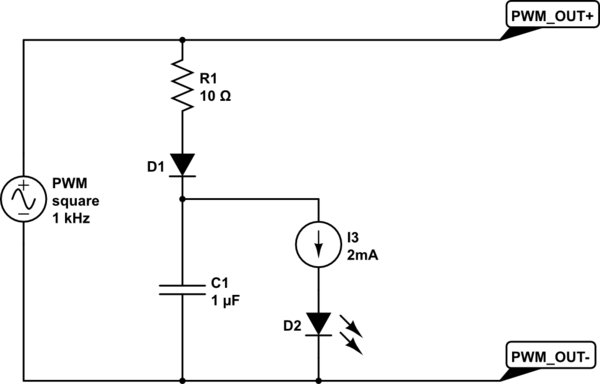I want to make a PCB that has an ESP32 on it, and the ESP sends a PWM signal to the motor driver. I want to indicate if the PWM signal is being sent or not by LED, without interfering with the PWM signal.
Is there any particular sensor or way in which I can do this? Prior to this, I tried putting an SMD LED parallel to the PWM signal, but there was some problem the frequency of the PWM that doesn't work with LED.
I have a project that uses all the pins of esp, and the pwm trace goes from one pcb to another via header pins, so I need to make sure that pwm is coming through the headers. Sometimes there may be some mechanical error(in wiring) that might block PWM signals.
I am using sign-magnitude mode to drive the motor, so I would be using 0-100% PWM to drive the motor, so adding any element directly in the PWM wire should not drop the voltage, because it would reduce the resolution of my drive mode(lets say voltage drop is 1v, so i would get the speed resolution of 1-4volt only on pwm to control the speed of motor)



